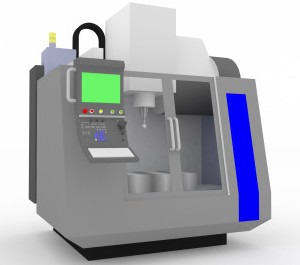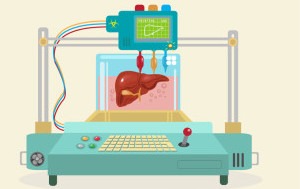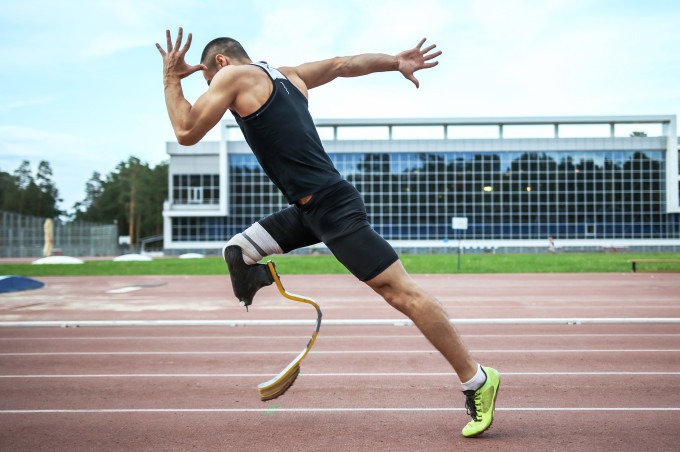The partnership between manufacturing and the medical device and prosthetics industries has a long, rich and productive history. The visions of medical revolutionaries who have researched and developed ways to heal the human body, both inside and out, are only as practical as their ability to bring them to fruition. This is where manufacturing’s ingenuity, dependability and creativity come into play, shepherding previously unheard of medical advances through the final step of becoming a reality.
Prosthetics and medical implants are among the most impressive of these life-improving and often life-saving advances. The ability to repair and replace critical functions when the human body is unable to is one of the great achievements of medical history. Just as breakthroughs in that area continue to occur, advances in materials, efficiency and technology have kept manufacturing on the cutting edge of these advances as well. Two key processes that play a role in medical devices and prosthetics are CNC machining and 3D printing. Each has strengths and advantages, and has made a major impact on the medical field. Here’s a look at how.
CNC Machining for the Medical Industry
Perhaps no other technology has played as big a role in high-precision, close-tolerance manufacturing as CNC machining. The ability to rely on programmed, computer-aided coordinates (facilitated by highly trained and specialized machine operators) allowed for breakthroughs everywhere from aviation to architecture, and of course, the medical industry.
Naturally, accuracy and precision are critical to the success of medical devices and prosthetics. Whether ensuring the correct fit for prosthetic devices or requiring a high degree of accuracy to prevent interference with other critical bodily functions for internally implanted devices, there is little to no margin for error for devices designed to interact seamlessly with the human body.
The range of materials that can be CNC machined also plays a big role in the process’s importance to the medical field. Medical implants and prosthetics can cover all kinds of needs, and as such, they have different requirements for strength, flexibility and so on. The ability to CNC machine mechanical- and production-grade pieces from the strongest materials means that the integrity, versatility and strength of a device or piece will never be in question.

One more area where CNC Machining has made a huge impact on medical device manufacturing is scalability. To be sure, many medical devices are highly customized, with many unique pieces designed for one person. In such cases, the costs of CNC machining can be prohibitive. Yet even custom pieces like prosthetics can be designed to have standardized components, like fasteners and hinges, for instance. In other cases, internal Implants may be suitable for broader, less-customized production. In situations like these, CNC manufacturing can be a major asset, producing needed components in large quantities at much greater cost-efficiency than smaller runs or less-scalable processes.
Before moving to 3D printing in the medical field, below are the advantages of CNC machining, and when it is most useful:
- • A broad range of material choices, including production-grade polymers and metals
- • Highly scalable for situations where standard parts or components are required
- • Unparalleled accuracy
- • Fast production once development and setup stages are completed (these stages can require longer lead times for initial production runs).
3D Printing and the Medical Industry
One could be forgiven for thinking that 3D printing is a brand-new development — it’s everywhere as a buzzword, thanks in no small part to the recent availability of more affordable and portable 3D printers. 3D printing, rapid prototyping and additive manufacturing have however, been around as a technology for some time. What is true, though, is that the technology continues to evolve by leaps and bounds, creating incredible possibilities — and realities — for the medical industry.
A primary area in which 3D printing has made an impact is in prosthetics. Whereas the logistics of CNC machining can become time and cost prohibitive for a unique, highly customized piece like a prosthetic, 3D printing can provide great savings and efficiencies in those areas. Rather than the complete and extensive design development and programming process that CNC machining demands, 3D printing requires nothing more than uploading a CAD drawing to the machine. This drawing can even be achieved by scanning and manipulating a model — say, for instance, a person’s leg. In this way, lead times can be reduced from months or weeks to almost nothing — just scan, upload and begin printing.
Speed is worth mentioning as a separate point in the importance of 3D printing for medical devices and prosthetics. The easier setup and shorter lead times make for a technology that can shorten medical waiting lists and even help save more lives as the technology improves to be better able to handle biomaterials — cells and tissues, for instance. The possibilities for this technology in real-time, field usage are endless.
Even before those advances in materials occur, 3D printing continues to evolve in that area. Typically associated with polymers and prototype-grade production, 3D printing is becoming better able to handle metals as well. For the many situations where rubber and other polymers are preferable for use, 3D printing has evolved far beyond the skeletal stringy pieces that some may associate with the process. The additive manufacturing technique that 3D printing is built on is capable of producing solid, strong, high-strength rubberized pieces, prostheses and implants that can and have stood up to even the toughest wear and tear.
Before closing, the potential of 3D printing is also significant. As scientists and doctors develop machines and materials that can 3D print tissues, skin and even internal organs, the future of modern medicine seems to be on the horizon. As 3D printing technology becomes even more portable and accessible, the speed and efficiency with which medical solutions can be administered to those in need will also vastly improve, affecting everything from the military to civilian medical squads. Here’s an overview of 3D printing’s benefits, advantages and possibilities.
- • Unprecedented cost savings for custom, short-run pieces like prosthetics.
- • CAD basis for 3D printing makes for shorter lead times and in some cases, faster production than CNC machining.
- • Constantly growing list of materials available, including biomaterials.
- • Ability to produce medical-grade, strong and solid pieces — not just prototypes.
- • Incredible potential for medicine’s future. Tomorrow’s medical advances will be built on the boundaries pushed today by 3D printing.



